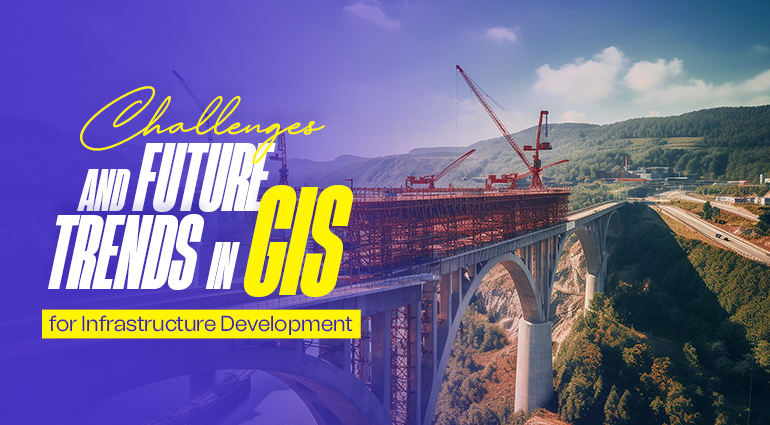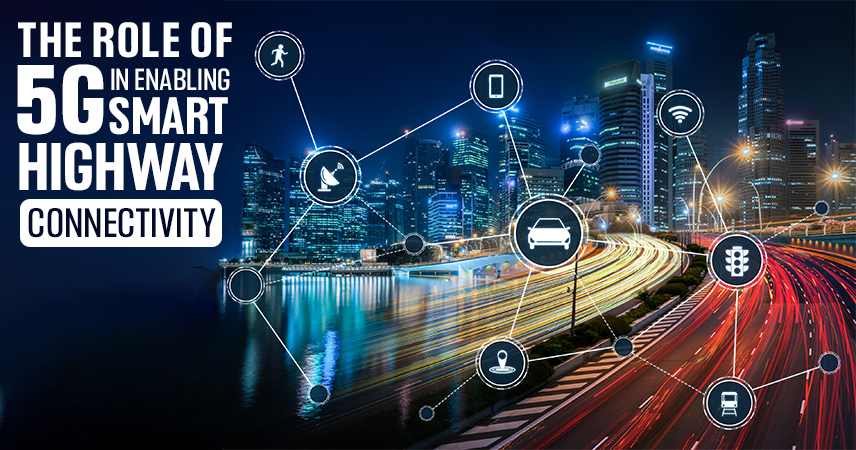
Challenges and Future Trends in GIS for Infrastructure Development
- By Admin
- 18-10-2023

Geographic Information Systems (GIS) have revolutionized the way infrastructure is planned, developed, and managed. These powerful tools enable us to capture, analyse, and visualize spatial data, providing invaluable insights for infrastructure development projects. However, as technology continues to evolve, so do the challenges and opportunities in the field of GIS for infrastructure development. In this blog, we will explore the current challenges and future trends in GIS that will shape the way we build and maintain critical infrastructure.
Challenges in GIS for Infrastructure Development
GIS is a powerful tool for infrastructure development, but it also faces a number of challenges. Here are some of the key challenges in GIS for infrastructure development:
1. Data Integration and Quality:
Gathering data from diverse sources, including satellite imagery, surveys, government records, and sensor networks, presents a formidable challenge. Ensuring the quality, accuracy, and compatibility of these disparate datasets remains a pressing issue.
Example: Inaccurate or incompatible data can lead to errors in locating underground utilities during construction, potentially resulting in accidents and project delays.
2. Scalability:
As urban areas expand and infrastructure demands grow, GIS systems must efficiently handle increasingly extensive and intricate spatial data.
Example: Processing and analysing large datasets become cumbersome and time-consuming, hindering prompt decision-making in response to urban growth.
3. Interoperability:
The use of different software platforms and data formats across GIS systems complicates seamless data sharing and utilization throughout various stages of infrastructure projects.
Example: When GIS is not integrated with engineering or asset management systems, it leads to redundant efforts and inefficient data management.
4. Data Privacy and Security:
As infrastructure data goes digital, concerns about data privacy and security have surged. Striking a balance between safeguarding sensitive information and providing access to authorized personnel is an ongoing challenge.
Example: Protecting critical infrastructure data from cyber threats while ensuring accessibility for authorized personnel remains a complex endeavour.
5. Workforce Skill Gap:
The field of GIS is evolving rapidly, demanding a growing pool of skilled professionals who can harness its full potential. Bridging the skill gap is pivotal for successful infrastructure development.
Example: Inadequate GIS expertise can lead to inefficient planning, costly errors, and project delays.
Future Trends in GIS for Infrastructure Development
GIS technology is constantly evolving, and new trends are emerging all the time. Here are some of the future trends in GIS that are likely to have a significant impact on infrastructure development:
• Increased use of artificial intelligence (AI) and machine learning (ML): AI and ML are already being used in GIS for tasks such as image classification, object detection, and predictive analytics. In the future, AI and ML are likely to be used even more extensively in GIS, to automate tasks and to provide new insights into spatial data.
Example: AI algorithms can predict when maintenance is needed for a bridge by analysing data on usage, weather conditions, and structural health, thereby enhancing infrastructure maintenance.
• Greater use of cloud computing: Cloud computing is making it easier and more affordable to access GIS software and data. In the future, cloud GIS is likely to become even more widely adopted, making GIS more accessible to small and medium-sized businesses and governments.
Example: Cloud GIS allows infrastructure developers to collaborate seamlessly on a shared platform, eliminating geographical constraints and enhancing data accessibility.
• Widespread use of mobile GIS: Mobile GIS apps are making it possible to collect and analyze spatial data in the field. In the future, mobile GIS is likely to be used even more extensively in infrastructure development, to improve the efficiency of field operations and to provide real-time data to decision-makers.
Example: Inspectors equipped with mobile GIS can assess the condition of road surfaces and update databases on the spot, facilitating timely road maintenance decisions.
• Increased use of 3D GIS and digital twins: 3D GIS and digital twins are being used to create virtual representations of the real world. This technology is likely to play an increasingly important role in infrastructure development, to support planning, design, and construction activities.
Example: 3D GIS can visualize the visual impact of a proposed building project on its surroundings, aiding in assessing its appropriateness and mitigating environmental concerns.
• Integration of GIS with other technologies: GIS is increasingly being integrated with other technologies, such as the Internet of Things (IoT), big data analytics, and augmented reality (AR). This integration is leading to the development of new and innovative GIS applications for infrastructure development.
Example: Integration with IoT enables real-time monitoring of infrastructure assets, such as bridges, with sensors providing data on structural integrity, allowing for proactive maintenance.
Conclusion
GIS has become an indispensable tool for infrastructure development, helping governments and organizations make informed decisions and optimize resources. However, challenges such as data integration, scalability, and workforce skills persist. To overcome these challenges, the GIS community must embrace future trends, including AI, cloud computing, 3D modelling, IoT, and open data initiatives.
As we look ahead, GIS will continue to evolve and redefine the way we plan, build, and manage infrastructure. By staying at the forefront of these trends and addressing current challenges, we can create more resilient, sustainable, and efficient infrastructure systems for the future.




